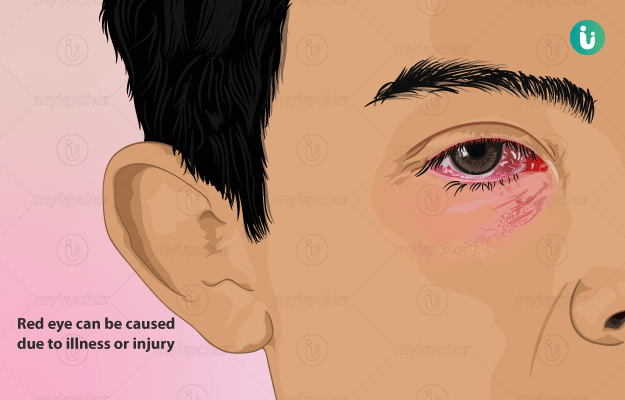What are Red Eyes?
A red eye is a symptom which indicates some problem with the eyes that is often minor. However, it may occasionally be seen along with pain and could signal a major issue. This may be due to swelling/inflammation of the eye following an infection called conjunctivitis, to bleeding inside the eye called subconjunctival haemorrhage.
What are its main associated signs and symptoms?
The main associated signs and symptoms of red eyes include:
- Pain
- Swollen eyes
- Itchy eyes, sometimes watery.
- A severe headache.
- Sensitivity to light.
- In severe cases, changes in vision may also be a complaint.
What are the main causes?
The causes of red eyes include:
- Foreign body entering the eyes, allergy or immunologic reaction.
- Injury, which could be penetrating or blunt.
- Chemical burns.
- Bursting of blood vessels in the eyes.
- Viral or bacterial infections.
- Conditions, such as conjunctivitis, chalazion and keratitis.
- Painful red eyes are seen with glaucoma, uveitis and corneal ulcer.
- Medications, such as aspirin or warfarin.
- Bleeding, such as subconjunctival haemorrhage, which is a medical emergency.
How is it diagnosed and treated?
The physician takes a complete history of the symptoms which includes the duration and extent of redness and the intensity of the associated pain if any. He/she then conducts a thorough examination of the eyes to evaluate:
- Vision.
- Movements of external eye muscles.
- Intraocular pressure.
- Slit-lamp test.
- Scratch, abrasion or oedema/swelling of the cornea.
- Eyelid and tear sac examination.
Management for red eyes depends entirely on the cause and may include:
- Management at home, such as:
- Use of cool compresses or washcloths a couple of times a day on closed eyes.
- Maintaining hand hygiene before touching the eyes and using clean, fresh bedding and towels daily.
- Avoiding allergy-causing triggers or irritants.
- Removing foreign body from the eye, if any.
- Management with medications includes:
- Ophthalmic antibiotic in cases of infection.
- Antihistamine/vasoconstrictor agent for allergies.
- Anti-inflammatory drugs, artificial tears and lubricant ointments for dry eyes.
- Blood pressure lowering medicines in the case of glaucoma.
- Surgery in severe cases.

 Doctors for Red Eyes
Doctors for Red Eyes  OTC Medicines for Red Eyes
OTC Medicines for Red Eyes



















